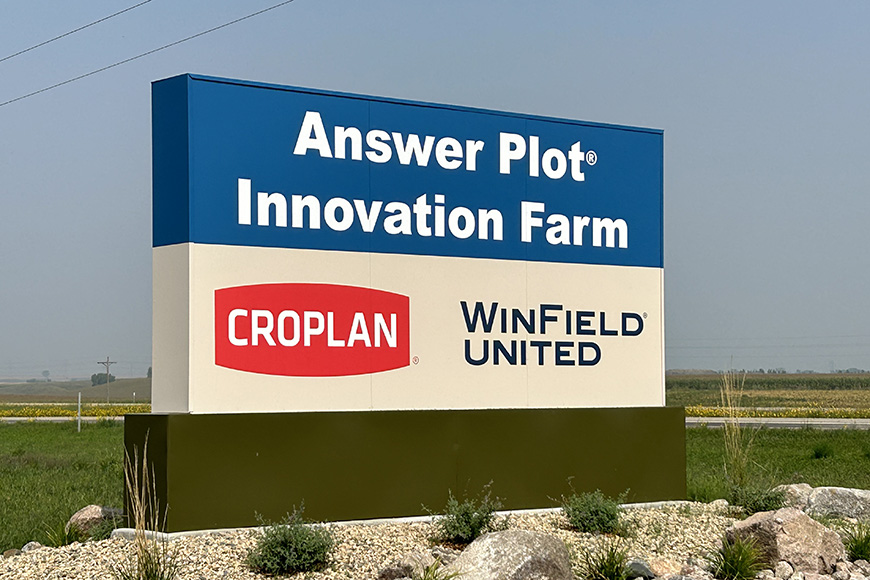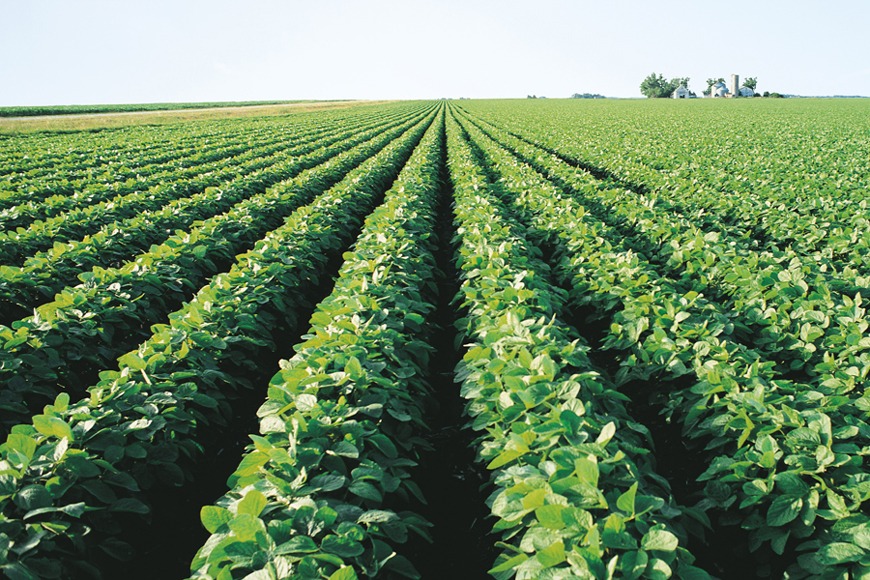Dec 20, 2024
Most Implemented Production Practices in 2024
Randy Brown, Ph.D.
Market Development Agronomist Lead

As we finish out the 2024 growing season, you’re probably focusing on what you can do to maximize success in 2025. In our talks with growers, we’ve found there is a lot of interest in implementing more innovative management practices. Take a look at some of the key trends and practices farmers embraced this season and learn why they might be worth considering in 2025.
Biological products are becoming a staple in many farmers' management strategies for good reason. Vetted products can help improve yields by increasing nutrient uptake and plant stress tolerance, especially in extreme growing conditions. When applied correctly, biologicals can enhance the soil microbiome, helping crops use soil nutrients more efficiently.
Biologicals may be a good fit if you plant early or face unpredictable early-season weather conditions. If you’re looking to implement biologicals on your acres, a range of options is available — whether it's an in-furrow application, planter box seed treatment or foliar spray.
Why this practice matters: Biologicals can help support crop development in several ways and can help ensure you’re getting the most from your fertilizer investment. Data-backed products may offer an opportunity to reach the next level of productivity.
A strategic fungicide plan is one of the simplest ways to boost crop yields. If you have untreated acres, applying a fungicide is a practical solution to reduce disease pressure and protect crops during critical growth stages.
As margins tighten, being strategic with your resources is more critical than ever. This year, many farmers chose to apply more mid-tier fungicide products, which offer good disease protection at a more affordable price than premium products. Mid-tier fungicides deliver solid performance and can be particularly effective when paired with hybrids that respond well to fungicide treatments.
Why this practice matters: A relatively small investment in a proven fungicide can offer a significant ROI in terms of improved yield potential and harvestability. If you want to push yield boundaries in 2025, try using response-to-fungicide scores to develop a strategic plan to protect crop health.
With tighter budgets, every dollar spent on inputs had to count last season. We saw farmers get creative with their production plans to reduce costs while maximizing productivity.
For example, some growers chose to reduce soybean seeding rates but, in return, invested in high-quality seed treatments like Warden® CX II to help improve germination, emergence and early seedling health.
Another practice becoming more popular is split nitrogen applications. Growers who irrigate are finding applying nitrogen through the pivot during critical growth stages can lead to a better ROI. For dryland farmers, split applications help to ensure the nutrients are available to the crop when needed most. When managed correctly, this strategy can allow you to trim back on fertilizer use without sacrificing yield.
Why this practice matters: Tight margins require more efficient input use. By strategically reallocating resources, you can optimize your investments and maintain yields, even with a tighter budget. The key is carefully assessing where it’s safe to pull back without sacrificing yield potential.
Every year, it seems we’re seeing more tools and technologies show up on the farm. Drones, in-field plant sensors and AI-driven technologies are becoming more accessible and are starting to make a noticeable impact on decision-making.
Drones are becoming particularly useful in areas with small field sizes where traditional aerial applicators might not be cost-effective or efficient. For these situations, drones offer a scalable solution for applying crop protection products like fungicides with high precision. As drone technology becomes more affordable, we’ll likely see higher on-farm adoption.
Equipment-sensor technology and machine learning algorithms continue to evolve, with more precise weed-management capabilities on new sprayers. These technologies can help optimize input use, delay herbicide resistance issues and improve weed control.
Why this practice matters: Technologies like drones, equipment sensors and AI can help farmers apply the right inputs at the right time with more precision than has been possible before. As equipment-sensor technology expands, it will be possible to gain more insights about in-season plant health for better real-time decision-making.
While not a new practice, conservation tillage acres continue to expand as farmers look for ways to improve soil health, reduce erosion and increase water retention. Practices like no-till farming and strip-till are becoming more common to promote long-term yield stability and productivity on the farm.
Conservation tillage can be especially beneficial where moisture is a yield-limiting factor. However, not all areas can easily adopt this practice due to varying soil types and environmental conditions. There also are agronomic considerations when switching from conventional to reduced tillage methods. Your agronomic advisor can help you determine whether this practice could be a good fit for your operation.
Why this practice matters: Conservation tillage can help improve soil structure and health, leading to long-term benefits like top-soil preservation, higher productivity, more yield stability and better nutrient cycling.
As you plan for 2025, think about how you can take your operation to the next level while managing risk and budgets effectively. While not all practices mentioned here will be a good fit for your operation, you may be able to apply some of them next season. Work closely with your agronomy team and CROPLAN® retailer to leverage resources and data to find the best products and practices for your acres.
All photos are either the property of WinField United or used with permission.
© 2024 WinField United. Important: Before use always read and follow label instructions. Crop performance is dependent on several factors many of which are beyond the control of WinField United, including without limitation, soil type, pest pressures, agronomic practices and weather conditions. Growers are encouraged to consider data from multiple locations, over multiple years and to be mindful of how such agronomic conditions could impact results. CROPLAN, Warden and WinField are trademarks of WinField United.
Biologicals Gain Traction
Biological products are becoming a staple in many farmers' management strategies for good reason. Vetted products can help improve yields by increasing nutrient uptake and plant stress tolerance, especially in extreme growing conditions. When applied correctly, biologicals can enhance the soil microbiome, helping crops use soil nutrients more efficiently. Biologicals may be a good fit if you plant early or face unpredictable early-season weather conditions. If you’re looking to implement biologicals on your acres, a range of options is available — whether it's an in-furrow application, planter box seed treatment or foliar spray.
Why this practice matters: Biologicals can help support crop development in several ways and can help ensure you’re getting the most from your fertilizer investment. Data-backed products may offer an opportunity to reach the next level of productivity.
Fungicides Offer a Simple Way to Boost Yields
A strategic fungicide plan is one of the simplest ways to boost crop yields. If you have untreated acres, applying a fungicide is a practical solution to reduce disease pressure and protect crops during critical growth stages. As margins tighten, being strategic with your resources is more critical than ever. This year, many farmers chose to apply more mid-tier fungicide products, which offer good disease protection at a more affordable price than premium products. Mid-tier fungicides deliver solid performance and can be particularly effective when paired with hybrids that respond well to fungicide treatments.
Why this practice matters: A relatively small investment in a proven fungicide can offer a significant ROI in terms of improved yield potential and harvestability. If you want to push yield boundaries in 2025, try using response-to-fungicide scores to develop a strategic plan to protect crop health.
Cost Efficiency Remains a Priority
With tighter budgets, every dollar spent on inputs had to count last season. We saw farmers get creative with their production plans to reduce costs while maximizing productivity. For example, some growers chose to reduce soybean seeding rates but, in return, invested in high-quality seed treatments like Warden® CX II to help improve germination, emergence and early seedling health.
Another practice becoming more popular is split nitrogen applications. Growers who irrigate are finding applying nitrogen through the pivot during critical growth stages can lead to a better ROI. For dryland farmers, split applications help to ensure the nutrients are available to the crop when needed most. When managed correctly, this strategy can allow you to trim back on fertilizer use without sacrificing yield.
Why this practice matters: Tight margins require more efficient input use. By strategically reallocating resources, you can optimize your investments and maintain yields, even with a tighter budget. The key is carefully assessing where it’s safe to pull back without sacrificing yield potential.
Precision Agriculture and Technology Use Evolves
Every year, it seems we’re seeing more tools and technologies show up on the farm. Drones, in-field plant sensors and AI-driven technologies are becoming more accessible and are starting to make a noticeable impact on decision-making.Drones are becoming particularly useful in areas with small field sizes where traditional aerial applicators might not be cost-effective or efficient. For these situations, drones offer a scalable solution for applying crop protection products like fungicides with high precision. As drone technology becomes more affordable, we’ll likely see higher on-farm adoption.
Equipment-sensor technology and machine learning algorithms continue to evolve, with more precise weed-management capabilities on new sprayers. These technologies can help optimize input use, delay herbicide resistance issues and improve weed control.
Why this practice matters: Technologies like drones, equipment sensors and AI can help farmers apply the right inputs at the right time with more precision than has been possible before. As equipment-sensor technology expands, it will be possible to gain more insights about in-season plant health for better real-time decision-making.
Conservation Tillage Acres Expand
While not a new practice, conservation tillage acres continue to expand as farmers look for ways to improve soil health, reduce erosion and increase water retention. Practices like no-till farming and strip-till are becoming more common to promote long-term yield stability and productivity on the farm.Conservation tillage can be especially beneficial where moisture is a yield-limiting factor. However, not all areas can easily adopt this practice due to varying soil types and environmental conditions. There also are agronomic considerations when switching from conventional to reduced tillage methods. Your agronomic advisor can help you determine whether this practice could be a good fit for your operation.
Why this practice matters: Conservation tillage can help improve soil structure and health, leading to long-term benefits like top-soil preservation, higher productivity, more yield stability and better nutrient cycling.
Plan Now for 2025
As you plan for 2025, think about how you can take your operation to the next level while managing risk and budgets effectively. While not all practices mentioned here will be a good fit for your operation, you may be able to apply some of them next season. Work closely with your agronomy team and CROPLAN® retailer to leverage resources and data to find the best products and practices for your acres.All photos are either the property of WinField United or used with permission.
© 2024 WinField United. Important: Before use always read and follow label instructions. Crop performance is dependent on several factors many of which are beyond the control of WinField United, including without limitation, soil type, pest pressures, agronomic practices and weather conditions. Growers are encouraged to consider data from multiple locations, over multiple years and to be mindful of how such agronomic conditions could impact results. CROPLAN, Warden and WinField are trademarks of WinField United.
IF YOU LOVE OUR INSIGHT, YOU’LL LOVE OUR ROI POTENTIAL
Every successful harvest starts with a seed. It just can't end there. Choose which high-performing seed products you’ll start with this season.






